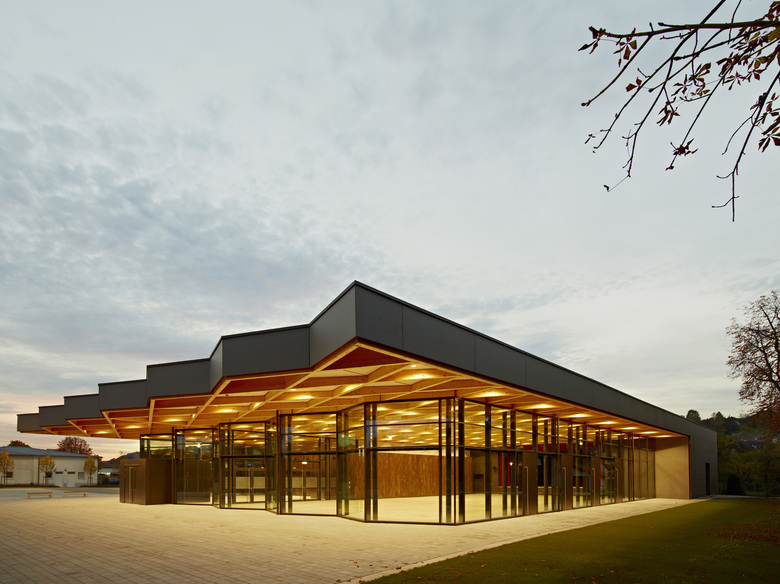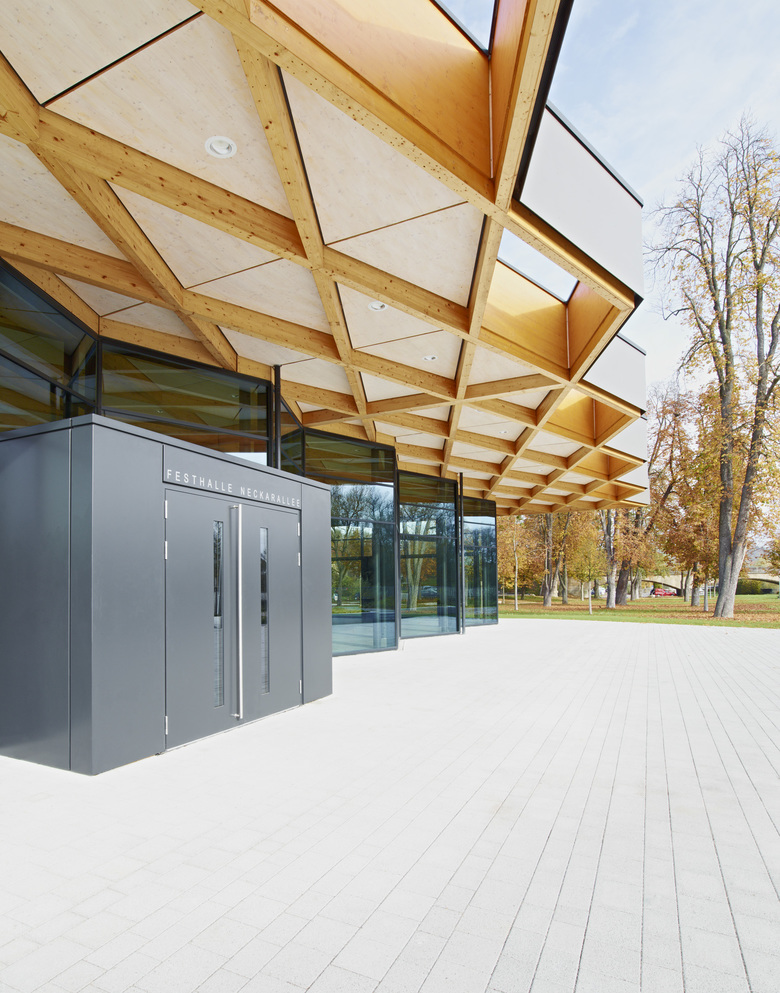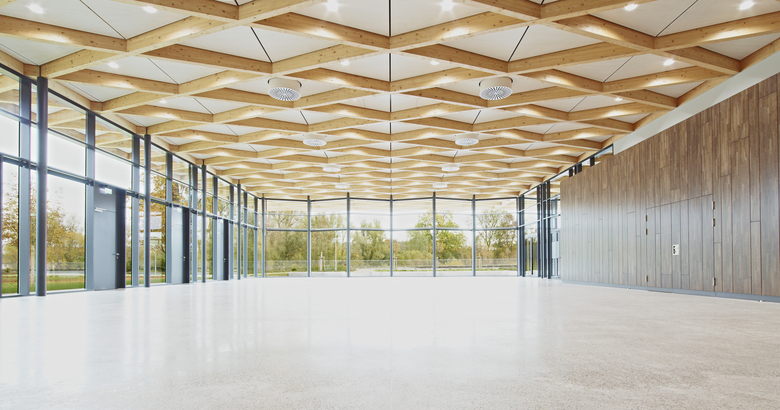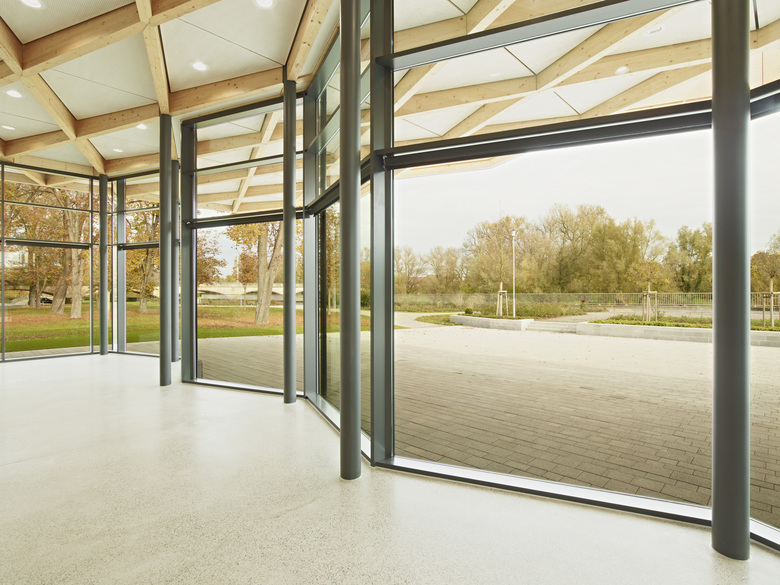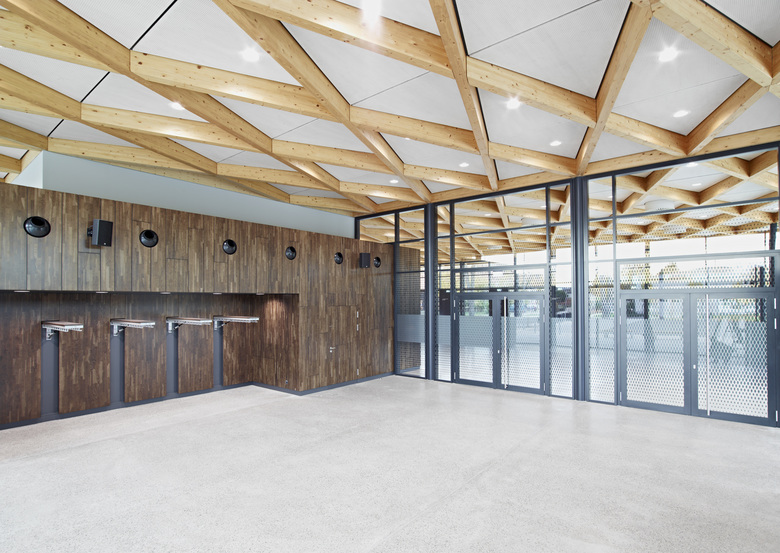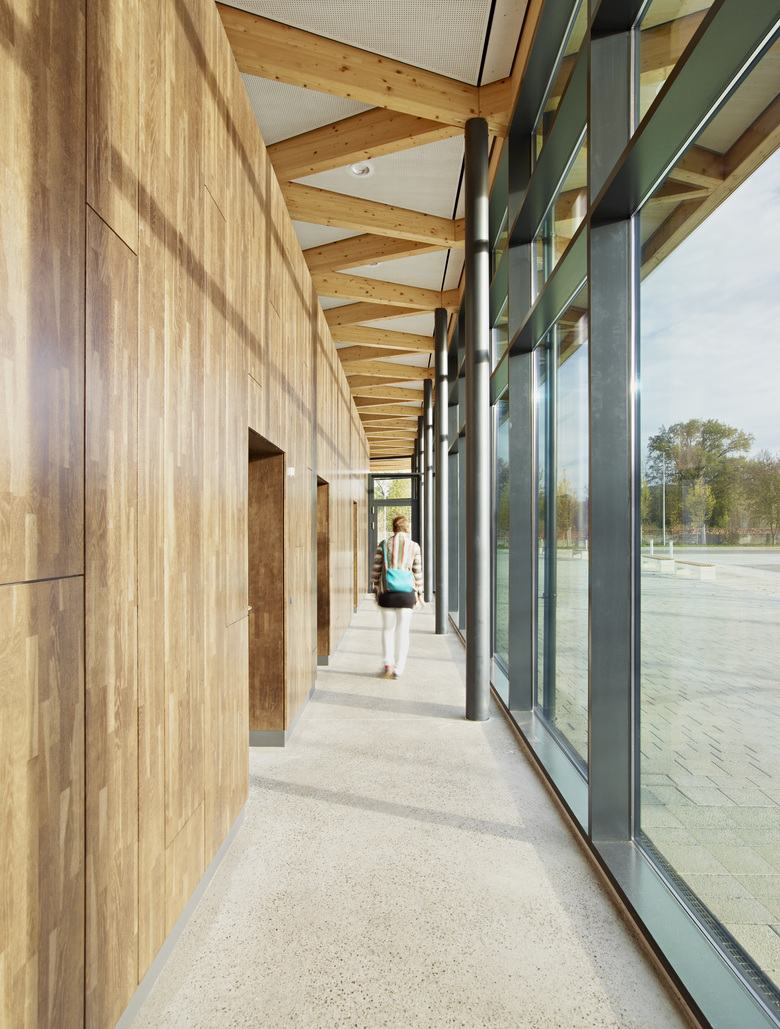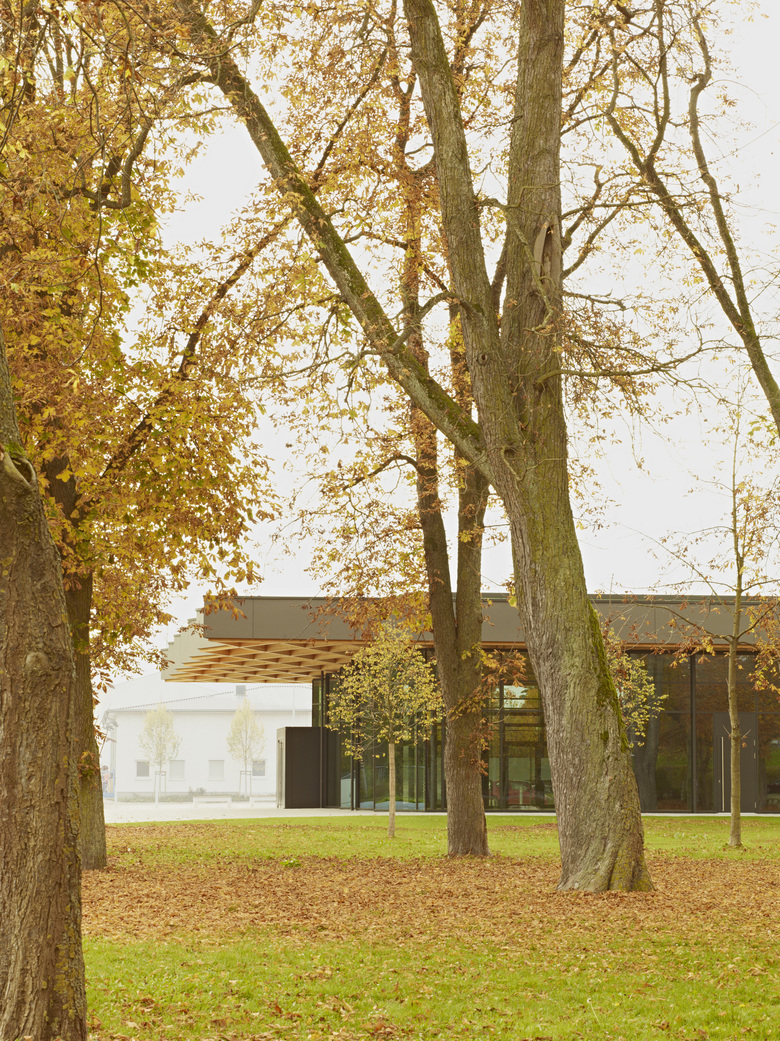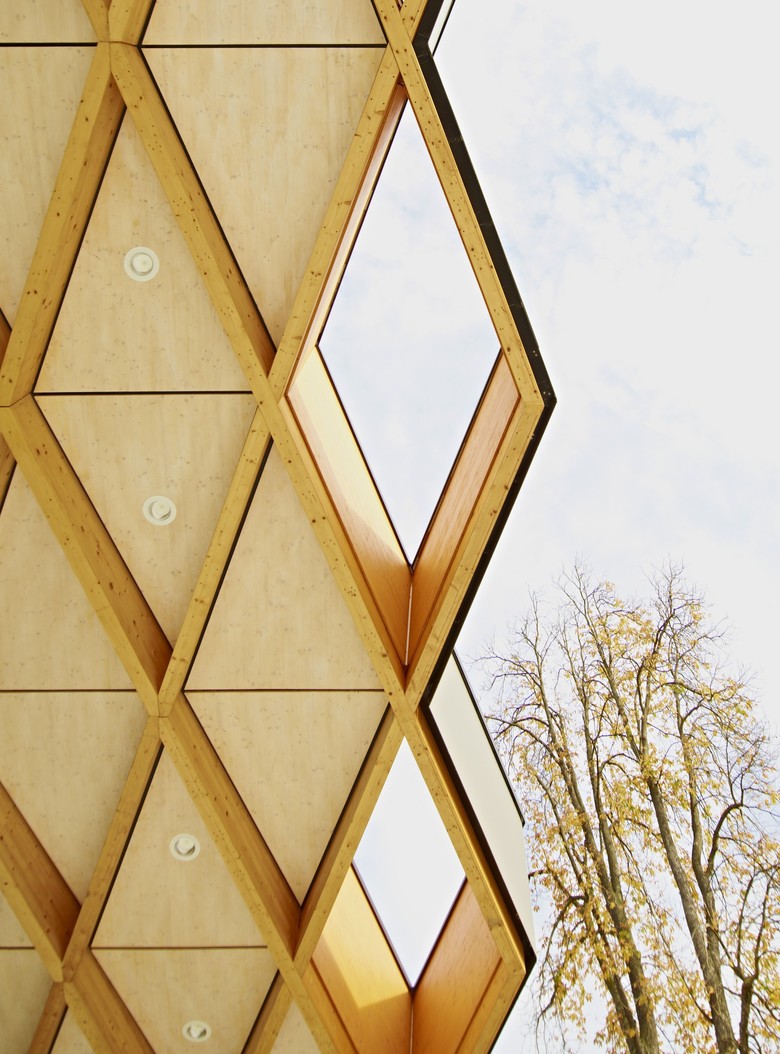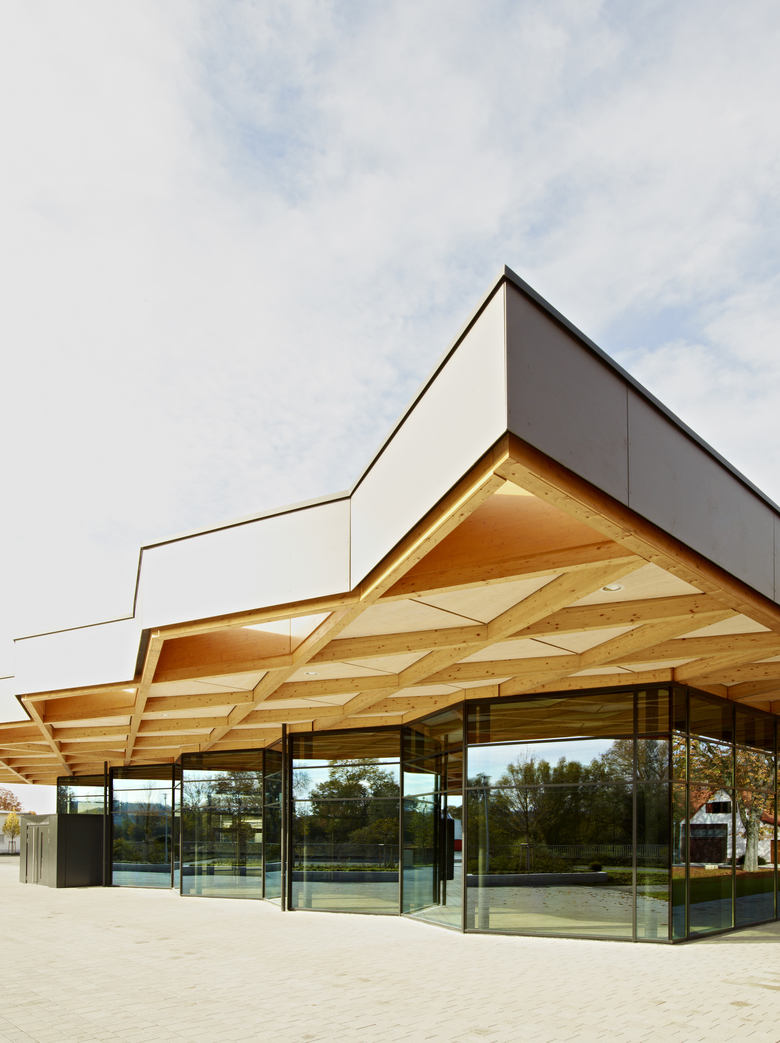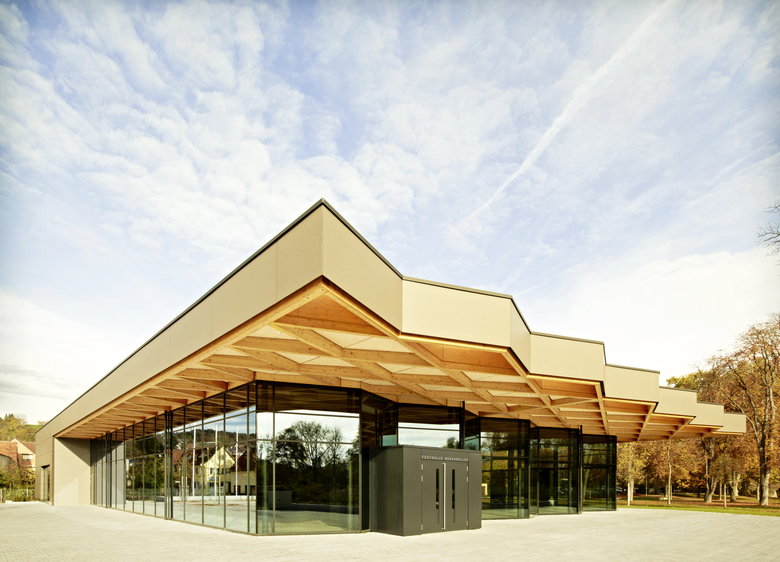Festival Hall Neckarallee
Neckartailfingen, Germany
As distinctive landscape the Neckarallee has found spatial closure in the newly located festival hall and fairground.
The new square at the entrance to the hall plaza provides the connection to the avenue and the fairground, while the raised area above the underpass offers visitors and residents of Neckartailfingen the opportunity to enjoy the river Neckar.
The small square with trees and a bench around the perimeter has been created between the Alleenstraße and the new hall. It can be used together with the multi-purpose room for smaller events. The street will be diverted from the Neckarallee to the north-west side of the hall, shifting the new festival hall midway between the grove and the fairground.
Organisation
The new festival hall is divided in two sections:
The closed area with all the functions needed for the stage including the multi-purpose room and the open area of the event room with visitor designated functions. The festival hall thereby opens up to the Neckarallee, the Neckar and via the lobby, the fairground.
This gesture of openness is demonstrated by the distinctive design of the roof. The roof construction rests on the massive stage structure, stretching over the open event area. It juts out on three sides, drawing in the outer areas of the hall. For events using the festival tent, the kitchen and restrooms of the hall are located close by.
Construction and Material
The themes of the individual elements are derived from the immediate surroundings:
The roof support made of laminated timber is conceived as a diamond shaped grid in analogy to the image of the overlapping branches and twigs along the Neckarallee.
The tilted roof sails in the diamond shaped fields become a vibrant roof landscape, comparable with the roof of leaves of the nearby trees.
Polished Neckar pebbles are embedded in the exposed screed in the floor of the hall.
The structure for the kitchen and restroom area is clad with dark wood, with the material and structure mimicking the tree trunks along the Neckarallee. The reddish brown color of the fiber cement boards reflects the autumnal tones of the chestnut trees.
Innovative supporting structure
A distinctive feature of the supporting structure is the wooden roof girder grid. It has the capacity to transfer loads in two directions, even though the intersecting glulam girders lie within a single plane. This made it possible to implement the large cantilevers all around the roof, extending up to 6 metres, and spans of around 16 metres without any problems. The innovative node design at the intersection of the girders enables both load-bearing directions to be resistant to bending, significantly reducing the height of the girders and consequently the material consumption. For this purpose, the three girder elements of one load-bearing direction are connected in a shear-resistant manner using fully threaded bolts to form a structurally sound overall cross-section. This allowed the supporting structure to be assembled on-site without the need for centring.
- Architects
- a+r Architekten
- Year
- 2013
Related Projects
Magazine
-
-
Building of the Week
A Loop for the Arts: The Xiao Feng Art Museum in Hangzhou
Eduard Kögel, ZAO / Zhang Ke Architecture Office | 15.12.2025 -
